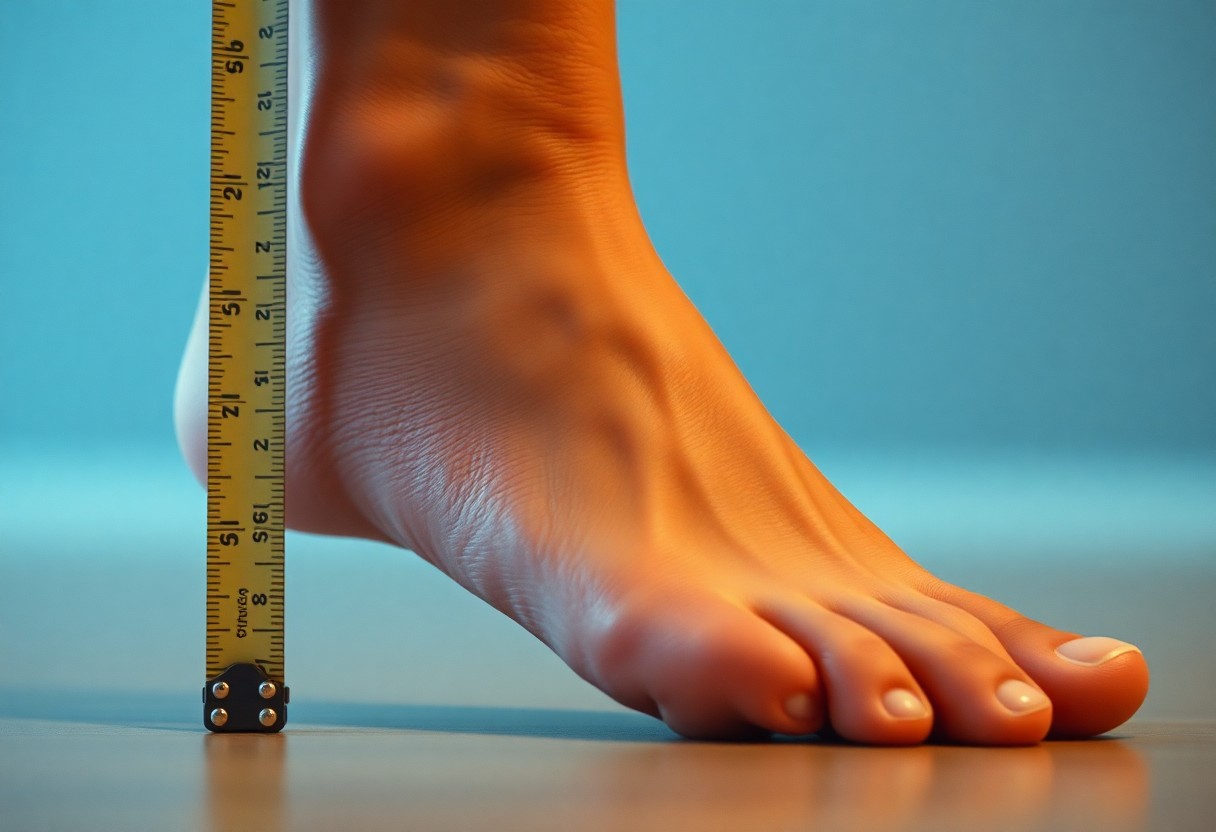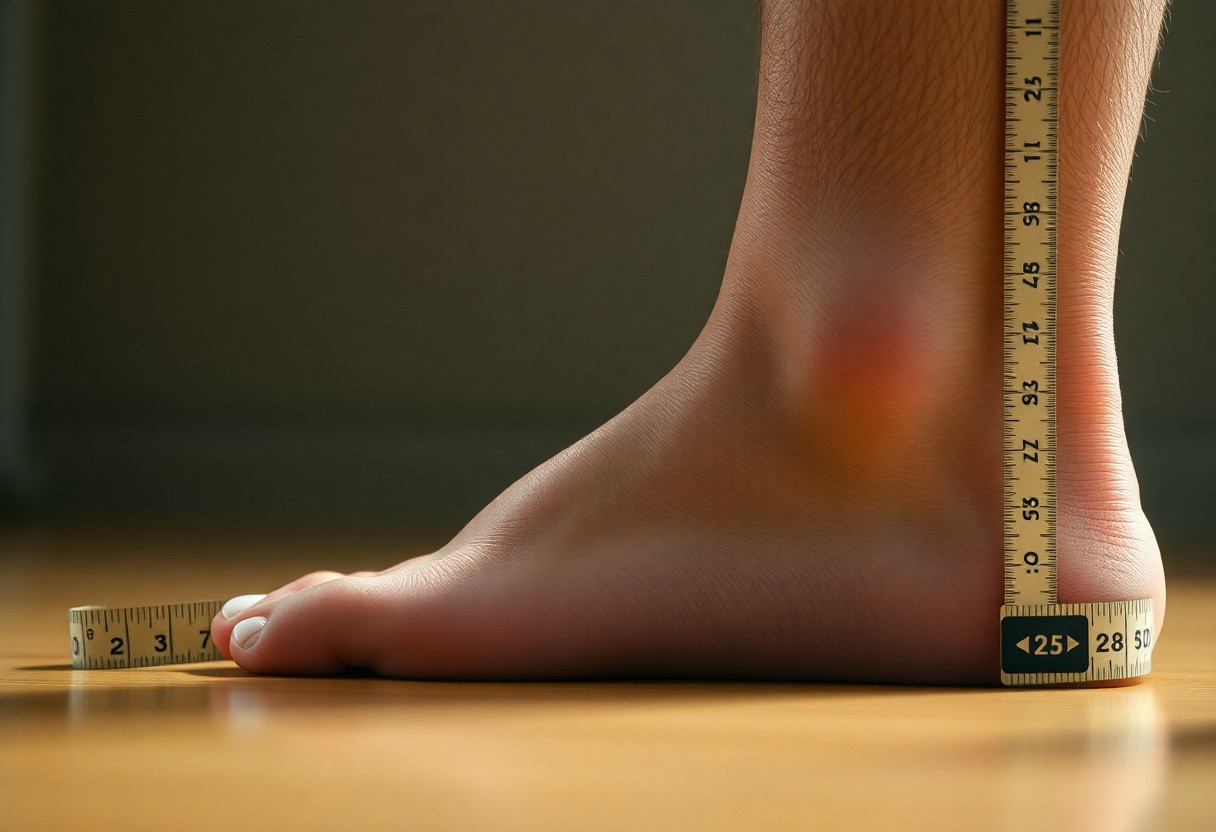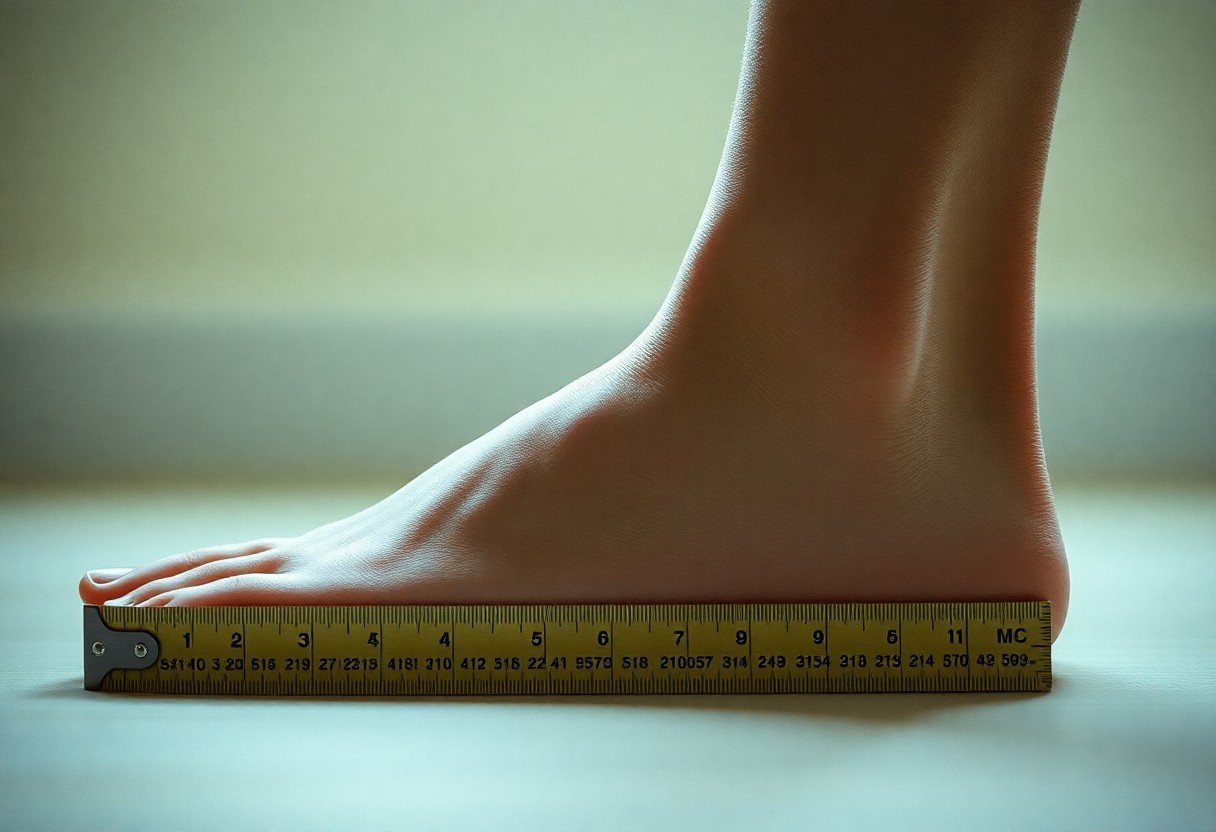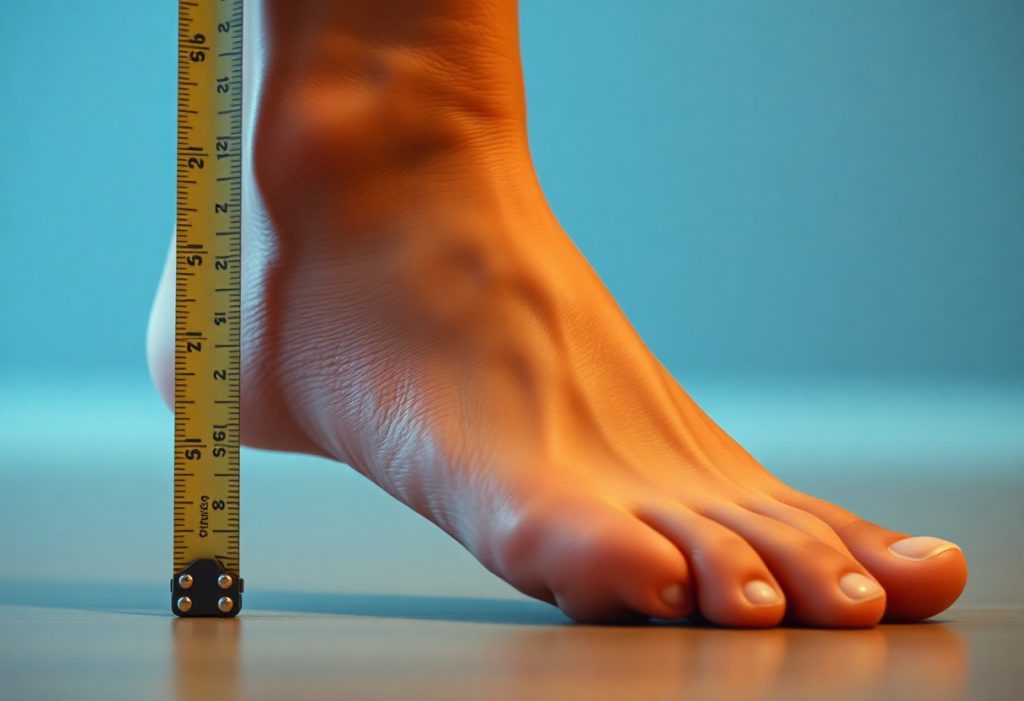Experiencing persistent foot discomfort and difficulties in finding well-fitting shoes is a widespread challenge for many individuals. Understanding your foot width is crucial for achieving optimal foot health. Symptoms such as pressure points on the sides of your feet, shoes that feel excessively tight despite being the correct length, and frequent blisters along the edges of your feet can indicate that your shoes do not fit properly. Properly fitting shoes are essential, and accurately identifying your foot width is the vital first step towards ensuring comfort. This comprehensive guide will equip you with straightforward, at-home methods to determine if you have wide feet, empowering you to make informed shoe choices and avoid potential foot complications.
Discover How Wide Feet Impact Your Comfort and Mobility
Wide feet are a common anatomical variation that affects many individuals. Factors such as bone structure, muscle distribution, and tissue density can contribute to a wider foot profile. Understanding this condition in depth will assist you in selecting better footwear options that promote proper foot health. Wide feet can influence your overall mobility and comfort, potentially leading to posture issues, thus highlighting the necessity of wearing shoes designed specifically to accommodate your unique foot shape.
How Your Genetics Shape Your Foot Width
Your genetic background significantly influences your foot width. You inherit various foot characteristics from your parents, including bone structure and arch height. Research suggests that up to 60% of foot width variation is linked to genetic factors. This hereditary influence shapes not only the size but also the overall shape of your feet from birth, making it important to consider these traits when selecting the right footwear for your needs.
How Your Lifestyle Choices Affect Foot Width Over Time
It may come as a surprise, but your daily lifestyle choices and habits can have a significant impact on your foot width over time. Various key factors contribute to this widening, including:
- Prolonged periods of standing
- Fluctuations in body weight
- Wearing inappropriate footwear
- Engagement in specific physical activities
These influences can lead to a gradual increase in foot width, underscoring the importance of considering your daily habits and lifestyle choices when assessing your foot health.
A combination of everyday activities and lifestyle factors can profoundly affect your foot width. Consider these additional influences:
- High-impact physical workouts
- Pregnancy-related changes
- Aging and its effects
- Pre-existing medical conditions
Each of these elements demands special attention to foot care and the choice of suitable footwear to ensure that your unique foot shape receives the necessary support and comfort.

Step-by-Step Techniques to Measure Your Foot Width Accurately
You can determine your foot width accurately using two main approaches: professional assessments and at-home measurement techniques. Obtaining precise measurements is essential for finding shoes that are comfortable and can help prevent foot-related issues. It is vital to measure your foot width at its widest point, which is usually located across the ball of your foot, to ensure a proper fit.
Utilizing Professional Shoe Fitting Services for Accuracy
Experts in shoe fitting employ tools like the Brannock Device, which provides detailed measurements of both foot length and width. This professional measurement guarantees accuracy and can identify specific foot characteristics that affect how shoes fit. Your foot width is then compared to standardized sizing charts from various shoe manufacturers to ensure the best possible fit for your feet.
Easy At-Home Methods to Measure Your Foot Width
The ideal time to measure your feet is around midday, when they are naturally expanded due to daily activities. To start, gather a piece of paper, a pencil, and a measuring tape or ruler. Stand on the paper to ensure you capture the most accurate measurements of your feet.
For at-home measurements, follow these steps: trace the outline of your foot while standing, measure the widest part of your foot, and compare your results to standard size charts. Make sure to measure both feet, as it is common for one foot to be slightly larger than the other. To enhance accuracy, measure across the ball of your foot and subtract 1/8 inch from the final measurement.

Identifying the Signs of Wide Feet: What to Look For
Recognizing wide feet can often be accomplished by being aware of various clear indicators. Pay close attention to specific physical markers and everyday comfort issues. Research shows that nearly 30% of individuals are unaware that they wear the wrong shoe width, often oblivious to the fact that they have wide feet. Your foot width is directly linked to your overall foot health and comfort during daily activities, making it crucial to identify and address any discrepancies.
Physical Features That Indicate Wide Feet
To determine if you have wide feet, closely examine the appearance and behavior of your feet. Look for visible signs such as foot spillage over the sides of your shoes, indentations on your feet caused by tight footwear, and a splayed foot shape when standing. Ensure that your toes have sufficient space to move freely, and that the ball of your foot fits snugly without causing any pressure points.
Common Discomfort Signals to Be Aware Of
Frequent discomfort indicators include recurrent blisters on the sides of your feet, numbness in your toes, and ongoing shoe discomfort. You may observe that your shoes stretch sideways over time or feel relief upon removing them. These symptoms often indicate that your footwear is too narrow for your foot width.
Recognizing these discomfort signals empowers you to make better-informed shoe selections. Neglecting these signs can lead to long-term foot complications, such as bunions and corns. Your shoes should provide adequate width from heel to toe, ideally with about a thumb’s width of space between your longest toe and the shoe’s tip. If you frequently feel pressure on the sides of your feet, consider seeking professional measurement for accuracy.
Utilizing a Comprehensive Width Chart for Optimal Shoe Fitting
Not all feet are created equal, and your foot width is as critical as its length when searching for the perfect shoes. A width chart can help you align your foot measurements with the appropriate shoe width, which typically ranges from AA (narrow) to EE (extra wide). Understanding these measurements can significantly enhance your overall shoe comfort.
Grasping Standard Foot Measurements for Better Fitting
To achieve accurate foot measurements, ensure you are standing, as your feet naturally spread under your body weight. Measure your foot width at the widest part of your foot, usually across the ball. For women, a standard width (B) ranges from 3.4 to 3.6 inches, while for men, a standard width (D) typically falls between 3.8 to 4.0 inches.
Understanding Variations in Shoe Width Sizes
Width size variations can differ by up to 1/4 inch between letter categories (A, B, D, E). Your feet may require different widths based on their unique shapes, and it is not uncommon to have one foot slightly wider than the other. Always prioritize fitting shoes to your wider foot to ensure optimal comfort.
Given the natural fluctuations in foot size throughout the day, it is advisable to measure your feet in the afternoon or evening when they are at their largest. Your foot width can also change due to factors such as weight changes, pregnancy, or aging, making regular measurements essential for appropriate shoe fitting.
Reflecting on Your Past Shoe-Fitting Experiences
Your previous shoe-fitting experiences can yield valuable insights into your foot width. If you often experience discomfort at the sides of your shoes or find yourself needing to size up just to achieve extra width, these signs are significant indicators. Many individuals with wide feet report having to purchase shoes 1-2 sizes larger than their actual foot length solely to accommodate their width requirements.
Evaluating Your Current Footwear for Width Compatibility
Above all, it’s crucial to assess your current shoes for their width compatibility. Stand on a piece of paper and trace the outline of your foot. If you observe that your foot spills over the sole of your shoe when compared to this outline, it is highly likely that you have wide feet. This simple test can help prevent future foot complications and guide you towards more suitable shoe options.
Identifying Pressure Points in Your Footwear for Comfort
Approximately 72% of individuals wear incorrectly sized shoes, leading to uncomfortable pressure points. You can identify these areas by examining where your current shoes exhibit excessive wear patterns or where redness appears on your feet after extended wear.
It is essential to recognize that pressure points can lead to long-term foot complications if left unaddressed. Regularly monitoring areas where your shoes feel tight, especially across the ball of your foot and the sides, can help prevent painful conditions like bunions and corns. Quick relief from pressure often indicates that your shoes are too narrow, suggesting it may be time to explore wider options.

Strategically Timing Your Foot Measurements for Greater Accuracy
Accurate foot measurements should be taken at specific times during the day for reliable results. Your feet naturally change size throughout the day due to physical activity and fluid retention. Consistent measurement times will yield trustworthy data for shoe sizing.
Morning Measurements for Establishing Baseline Width
To establish your baseline foot width, measure your feet first thing in the morning. After a night of rest, your feet are usually at their smallest size, providing a measurement that reflects the minimum width you require for comfortable footwear.
Evening Measurements for Ensuring Optimal Fit
Before making any shoe purchases, measure your feet in the evening when they are likely to be at their largest size. Your feet can expand by up to 8% throughout the day due to walking and standing, making this consideration essential for ensuring a comfortable fit.
It’s also important to note that your evening measurements may be up to half a size larger than your morning measurements. This size discrepancy highlights the necessity of selecting shoes based on your evening foot measurements to prevent discomfort and potential foot health issues.
Essential Takeaways for Understanding Your Foot Width
Determining whether you have wide feet involves straightforward steps that you can undertake at home or with professional assistance. Your foot measurements, daily comfort in shoes, and visible signs such as bulging sides can provide valuable insights into the need for wide-width footwear. Measure your feet with a ruler, watch for red marks after wearing shoes, or visit a shoe store for professional sizing. By understanding your foot width, you can choose shoes that fit more effectively, thus preventing discomfort and potential foot issues. Making educated decisions about your footwear based on these indicators will ensure that your feet remain healthy and comfortable.
Answers to Common Questions About Foot Width
Q: How can I accurately measure my foot width at home?
A: Begin by placing a blank piece of paper on a flat surface, stepping onto it with your bare foot, and tracing the outline. Measure the widest part of the outline using a ruler. Perform this measurement for both feet in the evening when they are at their largest. A width exceeding 4 inches for men or 3.5 inches for women generally indicates wide feet.
Q: What physical signs suggest that I might have wide feet?
A: Look for clear indicators: cramped toes in regular-width shoes, red marks on the sides of your feet after wearing shoes, shoes that stretch sideways over time, or pressure on the sides of your feet. All these symptoms strongly suggest that your shoes are too narrow for your foot width.
Q: Is the wet foot test a reliable method for checking for wide feet?
A: Yes, the wet foot test is a valid method. Wet your bare foot and step onto a brown paper bag or dark surface. If your footprint shows a broad middle section that occupies most of the print’s width, it is likely that you have wide feet. Compare your footprint width against standard size charts available online or in shoe stores to confirm your foot width classification.
The Article How to Determine If You Have Wide Feet: Simple Methods and Signs to Check appeared first on My Shoes Finder
The Article Wide Feet: Simple Methods and Signs to Check Your Size Was Found On https://limitsofstrategy.com



I genuinely appreciate the emphasis you place on understanding foot width as a crucial factor in achieving foot health. As someone who has struggled with persistent foot discomfort for years, I can relate to the challenges of finding well-fitting shoes. It’s remarkable how often this topic is overlooked, yet it can significantly impact overall well-being and daily life.
Ah, wide feet – the often-overlooked problem that makes shoe shopping feel like an extreme sport. It’s like my feet have their own personality, insisting on being the life of the party while I’m just trying to find a pair of sneakers that doesn’t turn my pinky toe into a casualty! Seriously, who knew that proper foot width could become a form of self-discovery?